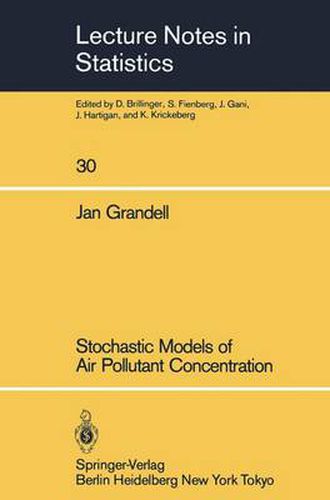Readings Newsletter
Become a Readings Member to make your shopping experience even easier.
Sign in or sign up for free!
You’re not far away from qualifying for FREE standard shipping within Australia
You’ve qualified for FREE standard shipping within Australia
The cart is loading…






This title is printed to order. This book may have been self-published. If so, we cannot guarantee the quality of the content. In the main most books will have gone through the editing process however some may not. We therefore suggest that you be aware of this before ordering this book. If in doubt check either the author or publisher’s details as we are unable to accept any returns unless they are faulty. Please contact us if you have any questions.
About fifteen years ago Henning Rodhe and I disscussed the calculation of residence times, or lifetimes, of certain air pollutants for the first time. He was interested in pollutants which were mainly removed from the atmosphere by precipitation scavenging. His idea was to base the calculation on statistical models for the variation of the precipitation i~tensity and not only on the average precipitation intensity. In order to illustrate the importance of taking the variation into account we considered a simple model - here called the Markov model - for the precipitation intensity and computed the distribution of the residence time of an aerosol particle. Our expression for the average residence time - here formula (13- was rather much used by meteorologists. Certainly we were pleased, but while our ambition had been to provide an illustration, our work was merely understood as a proposal for a realistic model. Therefore we found it natural to search for more general models. The mathematical problems involved were the origin of my interest in this field. A brief outline of the background, purpose and content of this paper is given in section 1. It is a pleasure to thank Gunnar Englund, Georg Lindgren, Henning Rodhe and Michael Stein for their substantial help in the pre paration of this paper and Iren Patricius for her assistance in typing.
$9.00 standard shipping within Australia
FREE standard shipping within Australia for orders over $100.00
Express & International shipping calculated at checkout
This title is printed to order. This book may have been self-published. If so, we cannot guarantee the quality of the content. In the main most books will have gone through the editing process however some may not. We therefore suggest that you be aware of this before ordering this book. If in doubt check either the author or publisher’s details as we are unable to accept any returns unless they are faulty. Please contact us if you have any questions.
About fifteen years ago Henning Rodhe and I disscussed the calculation of residence times, or lifetimes, of certain air pollutants for the first time. He was interested in pollutants which were mainly removed from the atmosphere by precipitation scavenging. His idea was to base the calculation on statistical models for the variation of the precipitation i~tensity and not only on the average precipitation intensity. In order to illustrate the importance of taking the variation into account we considered a simple model - here called the Markov model - for the precipitation intensity and computed the distribution of the residence time of an aerosol particle. Our expression for the average residence time - here formula (13- was rather much used by meteorologists. Certainly we were pleased, but while our ambition had been to provide an illustration, our work was merely understood as a proposal for a realistic model. Therefore we found it natural to search for more general models. The mathematical problems involved were the origin of my interest in this field. A brief outline of the background, purpose and content of this paper is given in section 1. It is a pleasure to thank Gunnar Englund, Georg Lindgren, Henning Rodhe and Michael Stein for their substantial help in the pre paration of this paper and Iren Patricius for her assistance in typing.